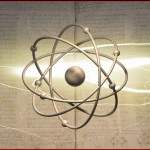Periodic table has two new elements to memorize
The periodic table of elements just got a bit tougher to memorize, thanks to the addition of two new elements whose existence is fleeting and can only be created in laboratories.
Pending formal names and symbols, elements 114 and 116 have been recognized by a panel of chemists and physicists from around the world.
"Our experiments last for many weeks, and typically, we make an atom every week or so," said Ken Moody, a chemist at the Lawrence Livermore National Laboratory, who along with Russian scientists discovered the new short-lived elements.
As is often the case with newer elements added in the periodic table, the scientists smashed atoms of different elements against each other to create new ones. In this case, calcium ions were struck against curium or plutonium ions.
Element 114 exists for a just a few seconds while element 116 atoms disintegrate after just a fraction of a second according to Moody.
The names of new elements of the periodic table end with "ium" and usually come from the names of famous scientists. Element 112, the last element to be recognized, was named copernicium after astronomer Nicolaus Copernicus. Elements 113 and 115 have yet to be officially approved by scientists.
Smashing atoms together provides scientists with clues on how these particles work and is not done primarily to create new elements.
The periodic table is required and familiar tool for high school science students. Scientists see its expansion as a way to entice more students to get interested in the subject.
